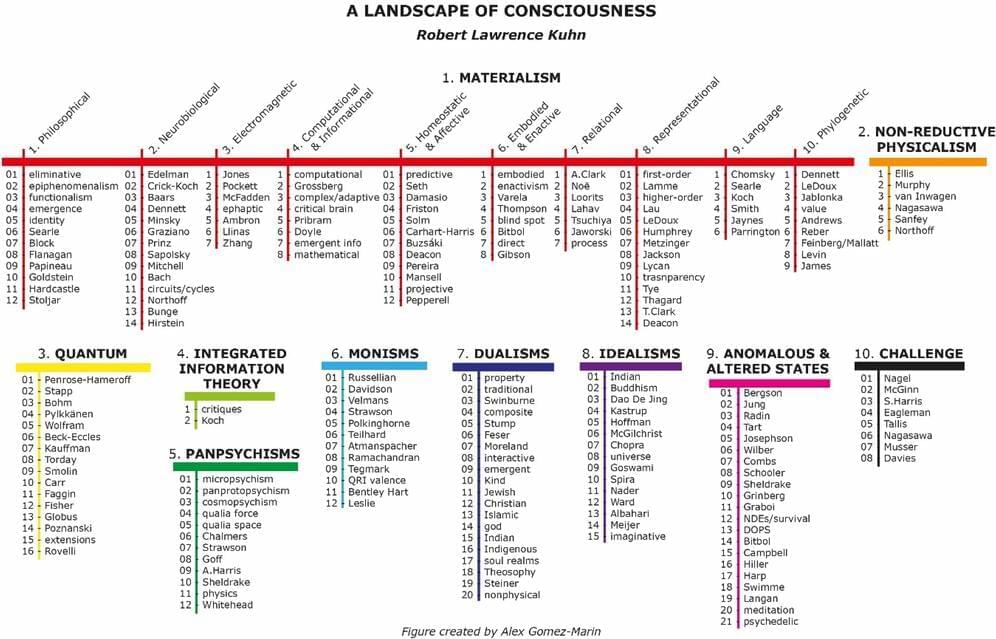What took so long for humans to appear on Earth? The Earth is 4.6 billion years old, and life began about 4 billion years ago, yet humans—the only intelligent, technological species we know of in the universe—have existed only for the last 200,000 years. Why didn’t we come sooner? What factor(s) delayed our appearance? And what can life’s timeline here say about the possibility of other technologically advanced lifeforms in the universe?
CRISPR/Cas9 is a gene editing tool that has revolutionized biomedical research and led to the first FDA-approved CRISPR-based gene therapy. However, until now, the precise mechanism of exactly how this tool works and avoids creating detrimental off-target effects was not well understood.
Almost 14 billion years ago, at the very beginning of the Big Bang, a mysterious energy drove an exponential expansion of the infant universe and produced all known matter, according to the prevailing inflationary universe theory.
“Out of meat, how do you get thought? That’s the grandest question.” So said philosopher Patricia Churchland to Robert Lawrence Kuhn, the producer and host of the acclaimed PBS program, Closer to Truth.
Supramolecular metal-based structures have immense potential for biomedical applications as multimodal theranostic platforms. This Review gives an overview of the design principles and synthetic strategies; it also highlights the achievements in the field of radiochemistry.
In the middle of the night, the world can sometimes feel like a dark place. Under the cover of darkness, negative thoughts have a way of drifting through your mind, and as you lie awake, staring at the ceiling, you might start craving guilty pleasures, like a cigarette or a carb-heavy meal.
Plenty of evidence suggests the human mind functions differently if it is awake at nighttime. Past midnight, negative emotions tend to draw our attention more than positive ones, dangerous ideas grow in appeal and inhibitions fall away.
Some researchers think the human circadian rhythm is heavily involved in these critical changes in function, as they outline in a 2022 paper summarizing the evidence of how brain systems function differently after dark.
A new photonic processor efficiently solves complex NP-complete problems using light, offering faster computation and scalability for future applications in optical neural networks and quantum computing.
As technology continues to evolve, the limitations of traditional electronic computers are becoming more evident, particularly when addressing highly complex computational problems. NP-complete problems, which grow exponentially in difficulty as their size increases, are among the most challenging in computer science. These issues affect a wide range of fields, from biomedicine to transportation and manufacturing. To find more efficient solutions, researchers are turning to alternative computing methods, with optical computing showing significant promise.
Breakthrough in Photonic Processor Development.
Michael Levin is a Distinguished Professor in the Biology department at Tufts University and associate faculty at the Wyss Institute for Bioinspired Engineering at Harvard University. @drmichaellevin holds the Vannevar Bush endowed Chair and serves as director of the Allen Discovery Center at Tufts and the Tufts Center for Regenerative and Developmental Biology. Prior to college, Michael Levin worked as a software engineer and independent contractor in the field of scientific computing. He attended Tufts University, interested in artificial intelligence and unconventional computation. To explore the algorithms by which the biological world implemented complex adaptive behavior, he got dual B.S. degrees, in CS and in Biology and then received a PhD from Harvard University. He did post-doctoral training at Harvard Medical School, where he began to uncover a new bioelectric language by which cells coordinate their activity during embryogenesis. His independent laboratory develops new molecular-genetic and conceptual tools to probe large-scale information processing in regeneration, embryogenesis, and cancer suppression.
TIMESTAMPS:
0:00 — Introduction.
1:41 — Creating High-level General Intelligences.
7:00 — Ethical implications of Diverse Intelligence beyond AI & LLMs.
10:30 — Solving the Fundamental Paradox that faces all Species.
15:00 — Evolution creates Problem Solving Agents & the Self is a Dynamical Construct.
23:00 — Mike on Stephen Grossberg.
26:20 — A Formal Definition of Diverse Intelligence (DI)
30:50 — Intimate relationships with AI? Importance of Cognitive Light Cones.
38:00 — Cyborgs, hybrids, chimeras, & a new concept called “Synthbiosis“
45:51 — Importance of the symbiotic relationship between Science & Philosophy.
53:00 — The Space of Possible Minds.
58:30 — Is Mike Playing God?
1:02:45 — A path forward: through the ethics filter for civilization.
1:09:00 — Mike on Daniel Dennett (RIP)
1:14:02 — An Ethical Synthbiosis that goes beyond “are you real or faking it“
1:25:47 — Conclusion.
EPISODE LINKS:
- Mike’s Round 1: https://youtu.be/v6gp-ORTBlU
- Mike’s Round 2: https://youtu.be/kMxTS7eKkNM
- Mike’s Channel: https://www.youtube.com/@drmichaellevin.
- Mike’s Website: https://drmichaellevin.org/
- Blog Website: https://thoughtforms.life.
- Mike’s Twitter: https://twitter.com/drmichaellevin.
- Mike’s Publications: https://scholar.google.com/citations?user=luouyakAAAAJ&hl=en.
- Mike’s NOEMA piece: https://www.noemamag.com/ai-could-be-a-bridge-toward-diverse-intelligence/
- Stephen Grossberg: https://youtu.be/bcV1eSgByzg.
- Mark Solms: https://youtu.be/rkbeaxjAZm4
- VPRO Roundtable: https://youtu.be/RVrnn7QW6Jg?feature=shared.
CONNECT:
- Website: https://tevinnaidu.com.
- Podcast: https://podcasters.spotify.com/pod/show/drtevinnaidu.
- Twitter: https://twitter.com/drtevinnaidu.
- Facebook: https://www.facebook.com/drtevinnaidu.
- Instagram: https://www.instagram.com/drtevinnaidu.
- LinkedIn: https://www.linkedin.com/in/drtevinnaidu.
Disclaimer: The information provided on this channel is for educational purposes only. The content is shared in the spirit of open discourse and does not constitute, nor does it substitute, professional or medical advice. We do not accept any liability for any loss or damage incurred from you acting or not acting as a result of listening/watching any of our contents. You acknowledge that you use the information provided at your own risk. Listeners/viewers are advised to conduct their own research and consult with their own experts in the respective fields.
#MichaelLevin #DiverseIntelligence #AI #Mind
The world of personal AI assistants is crowded. No doubt, you’ve probably seen or heard a cacophony of complaints around the recent launches of AI-powered gadgets that are meant to act as personal assistants, while minimizing use of your smartphone. We’ve seen the reviewers trash the Humane AI Pin, and the Teenage Engineering-designed, Rabbit R1.









